
Sergio Andres Peraza Avila is an artist [1] sculptor from Mexico. [2]

Sergio Andres Peraza Avila is an artist [1] sculptor from Mexico. [2]
Sergio Peraza Avila's academic education is in "Ceramic shell and bronze casting" at the Fine Arts University of Philadelphia, Pennsylvania (1992). He also studied at the Academia of San Carlos/Escuela Nacional de Artes Plásticas (National University of Plastic Arts), Universidad Nacional Autónoma de Mexico (UNAM), Mexico City and in 1986-87 he studied Graphic Design at Autonomous University of Guadalajara.(UAG) Jalisco, Mexico.
In 1988 he joined the International Conference on Public Sculpture at Trinity College.
In 1990 Peraza Avila had a Collective art show called "Primera Jornada Cultural" at the Acapulco Plaza Hotel with Tamayo, Anguiano and Cuevas works; he was the youngest artist at the show, and became a celebrity in Acapulco newspapers.
In 1991 Sergio was co-author with his brother Humberto of the three bronze monuments of 8 ft. (2.46m); each dedicated to Ricardo Palmerin, Guty Cárdenas and José Domínguez; Mexican Bolero composers and songwriters from the Yucatán area of Mexico. These statues are in front of the Museum of the Yucatán Music in the city of Mérida. In 1992 Sergio made the bronze monument of 7 ft. 2.15m)dedicated to Ruben Pabello, newspaper director in the city of Xalapa, Mexico, and became a member of the International Sculpture Center in Washington, DC.
In 1993, Sergio became acquainted with several Buddhist associations in Mexico City, he then created the Multimedia Installation "The liberation of the Smogmen" (66x21x12 ft.(2.3x6.5x7m)); sponsored by Amnesty International and an ecological group, in one of the last fabricclarity which closed in the south of Mexico City. He then became video director and producer of "Gaden Shartse Monks, the Mexico experience", an art video for Mexico's Tibet human rights association, Tibet’s House, New York City.
In the winter of 1994 was the debut solo exhibit, "oneman show" of his own work "Los Perazos de Peraza", the first retrospective of his sculpture, painting, engravings and drawing work, at the Centro Cultural Veracruzano in Coyoacan. Based on a small maquette by his father Humberto Peraza Ojeda, Sergio made the technical development and enlargement to 10 ft. (3.1m) of the monument in honor of the actor Mario Moreno, the well-known "Cantinflas"; this sculpture can be seen in the bullring of Mexico City and is a unique bronze sculpture signed by Perazas, both father and son. In 1996 he left Mexico and moved to the '13eme arrondisment' which is the genuine Parisien artistic area. During this time he participated in various exhibitions around France. He met many famous art people including Rhodia Bourdelle, Maria Felix, Antoine Tsvapoff, Sculptor Cesar Baldiaccian, the 'bande dessinateur' Albert Uderzo, and French painter, Mandrisse, who let Sergio use his gallery's basement to paint his oil canvases.
Sergio's first European solo exposition was in 1997 and appeared at the Rue de Longchamp, Paris and was sponsored by the Embassy of Mexico and entitled 'D'un Siecle a L'Autre'.
Sergio's most acclaimed solo exposition was 'Animas y Perros' (Animals and Dogs) at the Museo del Tempo Mayor INAH (Aztec Temple Museum), Mexico City. This was the first time Sergio presented his creations of 'Xolo-Sculptures (the subject was a contemporary view of the Mexican hairless dog, xoloitzcuintli, which appears in the myths of the ancient pre-Columbian cultures).
From then until now he has worked hard, mainly in Mexico, and it has taken him 10 years to get back to Paris to exhibit his artwork. In December 2010 Sergio was invited to by the Societe Nationale des Beaux Arts to join the international art show 'Salon 2009 Carrousel du Louvre'. It was a dream come true for him when he showed his symbolist abstract bronze sculpture 'Semiotica' down the crystal pyramid of the Louvre Museum.
2010–2011 He was invited by Mr. S.V.Titlinov Director of Yekaterinburg Art Foundation to the International Exhibition of Sculpture "In Family Unity- Unity of the World" as a representative of Mexico with his bronze sculpture "Tatlizcuintli" (fatherhood and xoloitzcuintli nahuatl word). This International Art-show took place at the Moscow State Institute of International Relations (University) of the MFA of Russia.
Other aspects of his work.
Between 1985–1995 famous Mexican painter, Raul Anguiano, was Sergio's mentor in the graphical art world. Sergio also collaborated with Maestro Anguiano on the creation of three mural paintings and became his closest 'sketch-pal' until the last days of Anguiano who died in 1996.
Sergio enjoys lecturing on his sculptor spirituality and sculpting struggles and his personal art travelling, past and present.
He was guest lecturer many times around Mexico and abroad, for example, Universidad Tecnica del Norte, Equator in 2007 and Fudan University, Shanghai, China in 2010.

Aimé-Jules Dalou was a 19th-century French sculptor, admired for his perceptiveness, execution, and unpretentious realism.

Baron François Joseph Bosio was a Monegasque sculptor who achieved distinction in the first quarter of the nineteenth century with his work for Napoleon and for the restored French monarchy.
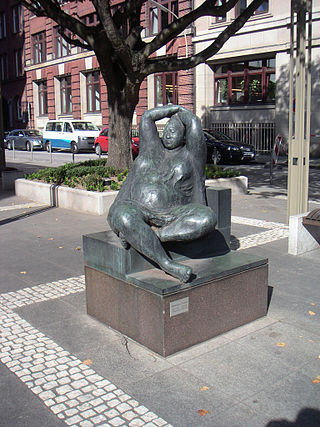
José Jesús Francisco Zúñiga Chavarría was a Costa Rican-born Mexican artist, known both for his painting and his sculpture. Journalist Fernando González Gortázar lists Zúñiga as one of the 100 most notable Mexicans of the 20th century, while the Encyclopædia Britannica calls him "perhaps the best sculptor" of the Mexican political modern style.
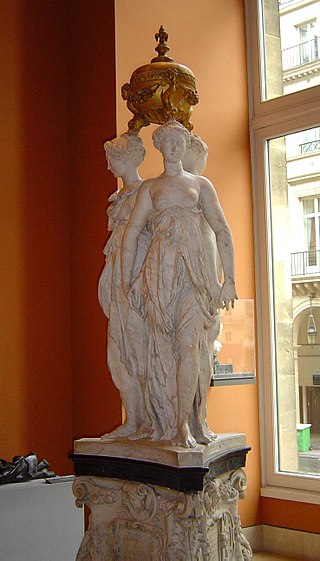
Germain Pilon was a French Renaissance sculptor.

Werner Mathias Goeritz Brunner was a Mexican painter and sculptor of German origin. After spending much of the 1940s in North Africa and Spain, he and his wife, photographer Marianne Gast, immigrated to Mexico in 1949.
José Raúl Anguiano Valadez was a notable Mexican painter of the 20th century, part of the “second generation” of Mexican muralists which continued the tradition of Diego Rivera, José Clemente Orozco and David Alfaro Siqueiros but experimented with it as well. Anguiano was born during the height of the Mexican Revolution, which would inspire a majority of his mural painting. He studied painting in his hometown of Guadalajara before moving to Mexico City to begin his career. His first major exhibition was held at the Palacio de Bellas Artes, at age 20. His works include over 100 individual and collective exhibitions with 50 murals, mostly in Mexico and the United States. As he continued his artistry with aspects of the Mexican muralism movement, he also experimented with other styles such as Cubism, Surrealism and Expressionism, with themes such as clowns and prostitutes. However, his most famous painting is “La espina” which depicts a Mayan woman digging a thorn out of her foot with a knife. His later works concentrated on depicting Mexico in vivid colors and traditional imagery.

Zurab Konstantinovich Tsereteli is a Georgian-Russian painter, sculptor and architect known for large-scale and at times controversial monuments. Tsereteli has served as the President of the Russian Academy of Arts since 1997.

John Raimondi is an American sculptor best known as a creator of monumental public sculpture, with works throughout the United States and several European countries. He lives and works in Palm Beach Gardens, Florida.

Dhruva Mistry is an Indian sculptor.
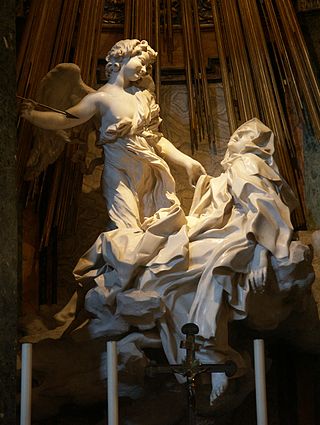
Baroque sculpture is the sculpture associated with the Baroque style of the period between the early 17th and mid 18th centuries. In Baroque sculpture, groups of figures assumed new importance, and there was a dynamic movement and energy of human forms—they spiralled around an empty central vortex, or reached outwards into the surrounding space. Baroque sculpture often had multiple ideal viewing angles, and reflected a general continuation of the Renaissance move away from the relief to sculpture created in the round, and designed to be placed in the middle of a large space—elaborate fountains such as Gian Lorenzo Bernini‘s Fontana dei Quattro Fiumi, or those in the Gardens of Versailles were a Baroque speciality. The Baroque style was perfectly suited to sculpture, with Bernini the dominating figure of the age in works such as The Ecstasy of St Theresa (1647–1652). Much Baroque sculpture added extra-sculptural elements, for example, concealed lighting, or water fountains, or fused sculpture and architecture to create a transformative experience for the viewer. Artists saw themselves as in the classical tradition, but admired Hellenistic and later Roman sculpture, rather than that of the more "Classical" periods as they are seen today.
Armando Romero is a Mexican painter.
Miguel Peraza is a Mexican self-taught sculptor, born in Mexico City September 29, 1959. His production consists of about 300 works of small format and 34 monumental works, with many monuments along Mexico and Colombia, mainly in universities. Throughout his career he has demonstrated mastery of materials, regardless of the size of his sculptures, and covering many topics.
Hanna Jubran is a Palestinian Arab Israeli sculptor, born in Jish, the upper Galilee. His work addresses the concepts of time, movement, balance and space. Each sculpture occupies and creates its own reality influenced by its immediate surroundings. The work does not rely on one media to evoke the intended response, but takes advantage of compatible materials such as, wood, granite, steel, iron and bronze.
John Sherrill Houser was an American painter and sculptor.

Helen "Elena" Escobedo was a Mexican sculptor and installation artist who has had work displayed all over the world from Mexico, Latin America, the United States, and Canada to the United Kingdom, (Germany), as well Israel and New Zealand.
Shahid Sajjad was a Pakistani sculptor. He died on July 28, 2014 in Karachi, Pakistan. His work continues to influence subsequent practitioners of these genres across Pakistan.

Bill Barrett is an American sculptor, painter and jeweller. He is considered a central figure in the second generation of American metal sculptors and is internationally known for his abstract sculptures in steel, aluminum and bronze.
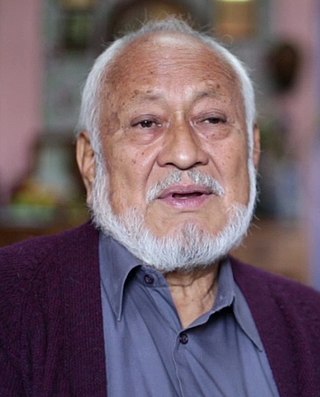
Abel Ramírez Águilar was a Mexican sculptor who won many prizes not only for traditional pieces in wood, stone and metal, but also for ice and snow sculptures in the United States, Canada, Japan and Europe. He was trained as a sculptor in Mexico and the Netherlands and has exhibited his work individually and collectively since the 1960s. He discovered snow and ice sculpting while visiting Quebec in the 1980s, first experiencing snow in his forties. The challenge intrigued him and he began sculpting this medium as an amateur. He began sculpting ice and snow professionally when he was entered in the competition associated with the 1992 Winter Olympic Games without his knowledge. Having practiced beforehand at an ice factory in Mexico City, he won the gold medal for this event, leading to invitations to other competitions for over twenty years. Ramírez lived in Mexico City.

Pedro Miguel de Cervantes Salvadores was a Mexican sculptor who exhibited in Mexico and abroad and created large monumental works for various locations in the country. Some of his work is noted for its use of used materials such as automobile parts from junkyards. Cervantes received various recognitions for his work including Premio Nacional de Ciencias y Artes in 2011 as well as membership in the Academia de Artes and the Salón de la Plástica Mexicana.
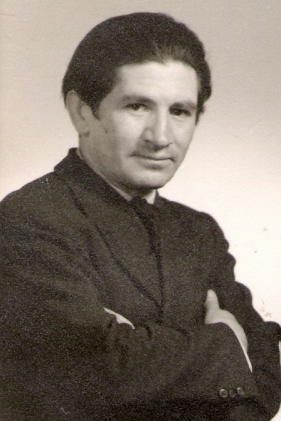
Rómulo Rozo Peña was a sculptor. Some authors confirm that he was born in Chiquinquirá, Boyacá. He lived a major part of his life in Mexico. He married Ana Krauss in Czechoslovakia and had three children: Rómulo, Gloria and Leticia. His second wife was Manuela Vera, yucateca, with whom he had two children: Marco Antonio and Gloria Antonia. Rozo is best known for his internationally recognized sculpture, Bachué, which influenced a generation of Colombian artists.